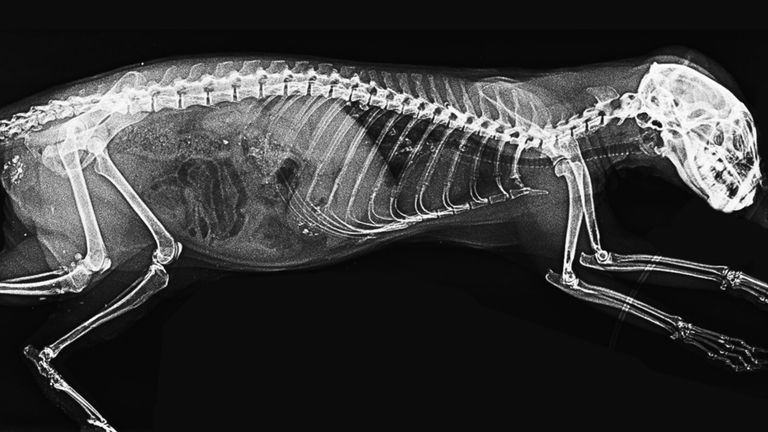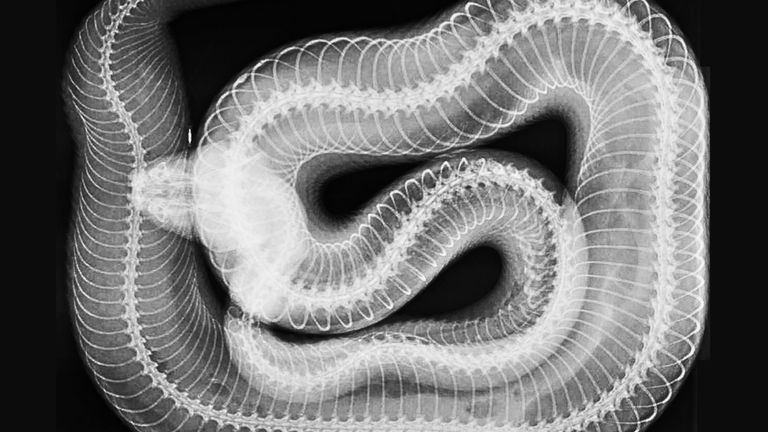London Zoo has released an insightful series of x-rays of bizarre creatures to showcase its work over the past 10 years.
Those fascinated by animal anatomy can now sift through zoo archives by viewing the skeletons of birds, reptiles and even mountain chicken frogs.
X-rays also include a critically endangered loggerhead turtle, little Humboldt penguin and a western diamondback rattlesnake.
They were all taken during the zoo’s work to care for more than 14,000 animals and 400 species.
The zoo’s veterinary team said the scans were crucial to help diagnose any problems and ensure the animals were kept in “optimal condition”.
Senior Veterinary Nurse Sophie Sparrow said: “Many of the species in our care are threatened in the wild and are part of important global breeding programmes.
“That means we have far less medical information on them than we have on livestock.”
The zoo shares vital information from the X-rays with veterinarians and conservationists around the world, “helping to improve animal and veterinary care around the world,” she said.
She added: “Visiting the vet is a bit more complicated for a lion than it is for a house cat, so we work with the zookeepers to make any treatment the animals need as easy as possible.
“For example, breeders incorporate healthcare training into the animals’ daily lives.”
Animals no longer need general anesthesia when simple procedures, such as blood tests, must be performed, she explained.
“Animals like Banu, our Asiatic lion, are happy to simply donate their tails for blood,” rather than taking drugs, she said.
The images have been shared ahead of the Conservation Zoo’s Vets In Action event this February, when the children will join the veterinary team during the spring half term to learn more about their work.




